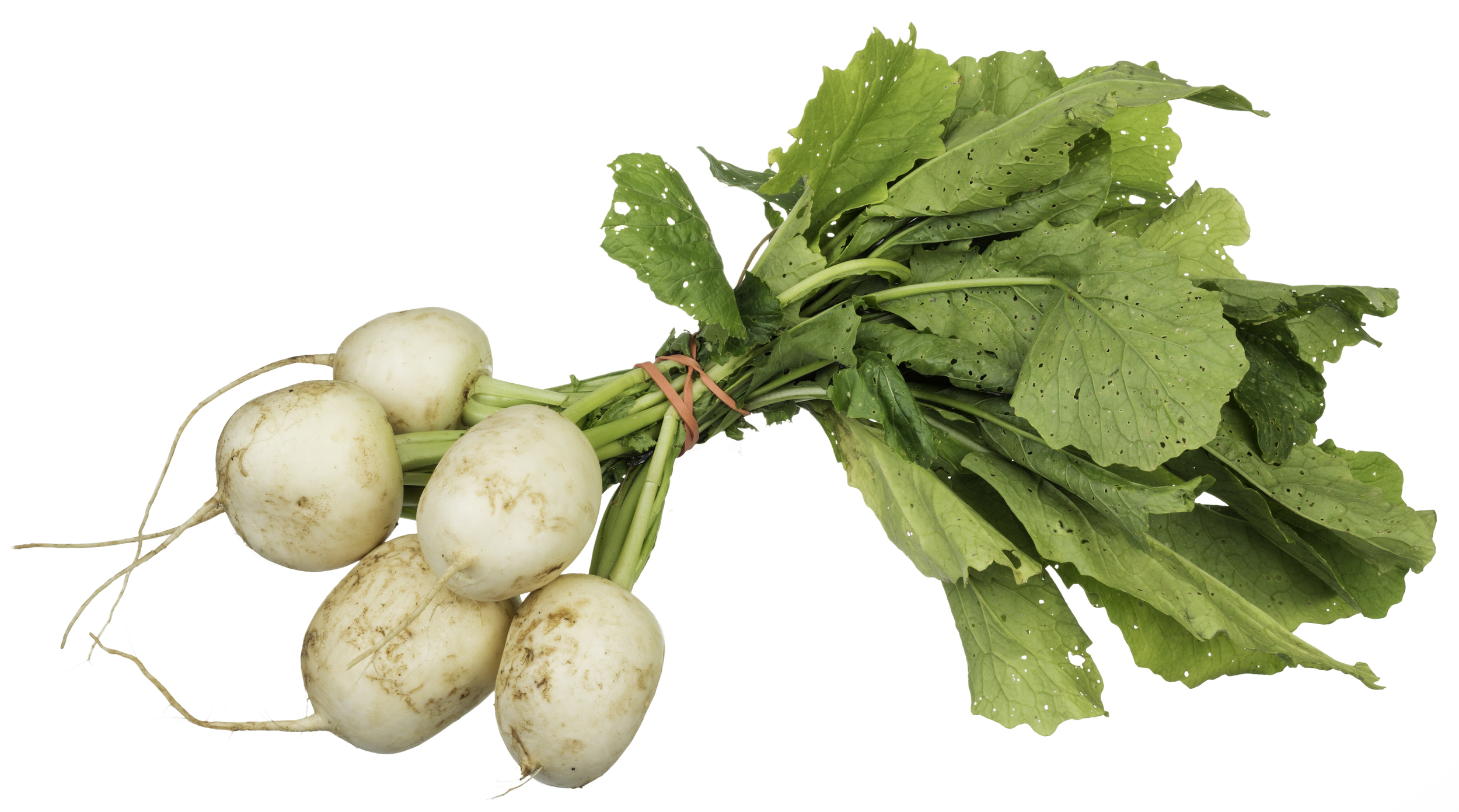Turnips grow best in zones 3-10. Plant the seeds 1 inch apart and 0.5 inch deep. Turnips are suited to the cool weather so they should be planted in early spring or late summer and can be grown in full sunlight or partial shade. Turnips are best suited to well-drained loamy and fertiles soil, with pH level of 6.5-7.0. It should be watered deeply every week with an inch of water. Add compost to the soil if it is a heavy clay soil. Turnips are best when grown fast and picked young.The plant can grow 1-2 feet tall and .5 feet wide. It is in bloom from May to August, and the seeds ripen from July to September. Turnips are suitable for xeriscaping because it is tolerant to droughts. Companion plants include peas, due to their nitrogen fixing in the soil, and cabbage,because of the turnip's tendency to repel certain pests.
Culinary and Medicinal Uses
In folk medicine, turnip seeds are used to treat cancer. Crushed seeds are turned into a poultice and applied to burns. The turnip leaves are cooked like spinach in the southern portion of America. The root can be grated and cooked; it has a slightly hot flavor (3). Turnip leaves are usually sauteed with onions and garlic; they have a characteristically bitter taste because they have an extremely high calcium content.
Significance to Cultural Communities
Turnips are native to the Irano-Turanian region. In 1500 BC, turnips were used for the oil that could be extracted from them in India. Romans and people from the Middle East used to use turnips as animal feed but also cooked and ate the vegetables themselves. During the years of slavery in America, slave owners would eat turnip roots and give the greens of the plants to the slaves. Traditional West African cuisine used many greens, so turnip leaves were used as a substitute during that time period, and were actually very nutrient dense. This practice established this plant over the years as central in southern African-American cuisine. (4)
_________________________
1. Turnip. (2013, October 1). Retrieved October 3, 2013, from Alternative Field Crops Manual website: http://www.hort.purdue.edu/newcrop/afcm/turnip.html
2. Christman, Steve. “Brassica rapa var. rapifera.” Floridata. May 29, 2003. http://www.floridata.com/ref/b/bras_rap_rap.cfm
3. Brassica rapa Turnip. (n.d.). Retrieved October 3, 2013, from Plants for a Future website: http://www.pfaf.org/user/Plant.aspx?LatinName=Brassica+rapa
4. “Turnip Greens.” IGA Institute: The Produce Department. May 9, 2006. http://www.igaalliance.com/Institute/IGAInstitute/english/Produce/VegProdInfo/08-106-1040.pdf

